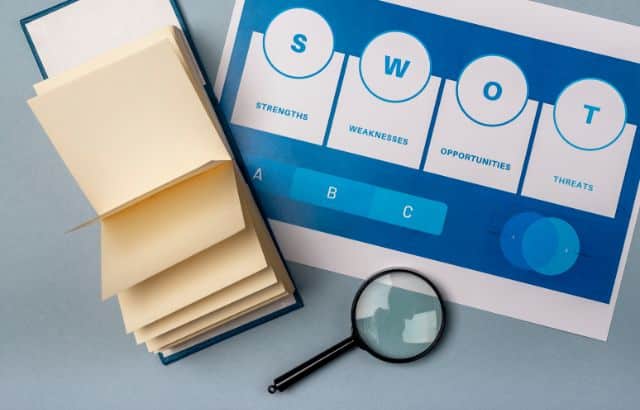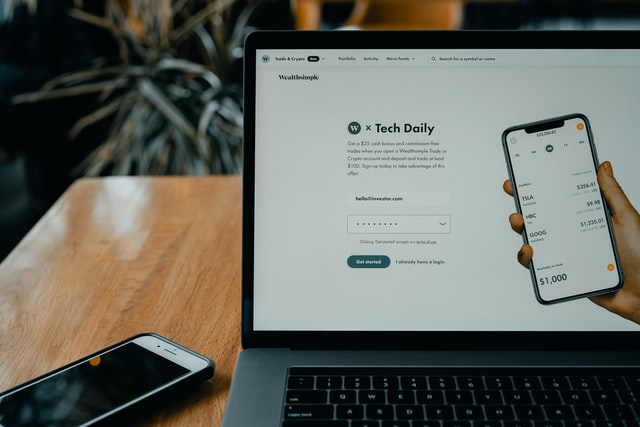Insider Threats- The name itself says everything. No, it is not due to a third party, but from an individual within the company or within the setup or within the premises or we can also say it’s an “insiders job”.
These individuals have access to crucial data and hence, they can put the entire organization into trouble. Actually, there are two possible reasons. The reasons for such an act can be due to malice or ignorance(which is actually seldom seen).
This means that it can come from any source- from disgruntled employees to vengeful ex-employees and members, there are many people who can wrongfully use the stored data to attack your organization.
While most businesses do have security software in place, with credentials that give access to such sensitive information and data, your security might not be able to do much.
With this in mind, here are a few things Renowned Business Transformation Leader Hirav Shah recommends, to reduce the risk of such attacks
Renowned Business Transformation Leader Hirav Shah, known for his transformative strategies that have propelled numerous globally successful brands, sheds light on the critical issue of insider threats. As a Business Turnaround Specialist and the innovator of Astro Strategy, Hirav Shah recognizes the inherent risks posed by individuals within organizations who have access to sensitive data. In this insightful guide, he shares invaluable recommendations to mitigate the risks associated with insider threats and safeguard your organization’s integrity and security.
Table of Contents
Insider Threats examples
- Employee Education and Awareness: Conduct regular training sessions to educate employees about the risks of insider threats and how to recognize suspicious behavior. For example, simulate phishing attacks to teach employees how to identify and report suspicious emails.
- Access Control and Least Privilege Principle: Implement strict access controls to limit employees’ access to sensitive data only to what is necessary for their job roles. For instance, a finance manager should not have access to HR records unless required.
- Monitoring and Auditing: Deploy robust monitoring tools to track employee activities and detect any unusual behavior. For example, use User and Entity Behavior Analytics (UEBA) to detect deviations from normal behavior patterns.
- Data Encryption and Protection: Encrypt sensitive data to prevent unauthorized access, even if insiders manage to bypass initial security measures. For instance, implement end-to-end encryption for communication channels and encrypt data stored on servers.
- Incident Response Plan: Develop a comprehensive incident response plan outlining steps to be taken in case of a security breach. This plan should include procedures for investigating insider threats and mitigating their impact. For example, establish a designated response team responsible for coordinating actions during a security incident.
- Employee Support and Communication: Create a supportive work environment where employees feel comfortable reporting concerns or grievances. Encourage open communication channels and provide resources for employees experiencing work-related stress or dissatisfaction. For example, offer confidential counseling services or establish an anonymous tip line for reporting suspicious behavior.
- Regular Security Assessments: Conduct regular security assessments and audits to identify vulnerabilities and weaknesses in your organization’s security posture. For instance, perform penetration testing to identify potential entry points for insider threats and patch any vulnerabilities.
- Vendor and Third-Party Risk Management: Extend security measures to include vendors and third-party partners who may also have access to sensitive data. Implement vendor risk management processes to assess the security posture of third-party vendors and ensure compliance with security standards. For example, require vendors to undergo regular security assessments and adhere to strict security protocols when accessing your organization’s systems or data.
By implementing these elements, organizations can strengthen their defenses against insider threats and mitigate the risks associated with malicious or negligent insiders.
Proactive Defense Strategies Against Insider Threats: Safeguarding Your Company’s Integrity
Employee Monitoring Software Adoption
This allows you to keep a check on the way members and employees handle the data and servers and allows you to identify any suspicious activity and patterns.
Strict Policies Enforcement
By having strict policies in place, you can make sure you take all the necessary steps on your end to inform people of your company, the right way to handle information and the areas or methods that they must avoid.
Training and Awareness On A Regular Basis
An important step for preventing any sort of risk or threat, is to keep the members and employees aware of the necessary steps required for the safe handling of company assets and awareness about the consequences of mishandling data intentionally and unintentionally.
Although these may sound like basic steps, the three combined serve as a powerful trio to avoid risks and threats. Since insider attacks are sudden and there may not be much you can do after it, having preemptive measures can help you always stay a step ahead in safeguarding your company.
Additionally, you also need to remember that an insider attack may not necessarily come from someone who belongs to your organization, it can also be a competitor who may have gotten their hands on credentials that let them access your information.
Also, you get the legal aspects sorted out with your company lawyers and work with your IT department to cover all ends for safety measures.
With these measures, not only do you stay prepared beforehand, but you also know the course of action you need to take in order to keep your company protected against insider threats and attacks.
Combating Insider Threats: Effective Strategies for Protection

- Employee Training: Educate staff on recognizing and reporting suspicious behavior.
- Access Control: Implement strict access controls to limit sensitive data exposure.
- Monitoring Systems: Utilize monitoring tools to track employee activities and detect anomalies.
- Behavioral Analysis: Employ algorithms to analyze user behavior for early threat detection.
- Clear Policies: Establish clear policies regarding data handling and acceptable use.
- Regular Audits: Conduct regular audits to assess security measures and identify weaknesses.
- Incident Response Plan: Develop a comprehensive plan to respond swiftly to insider threats.
- Employee Support: Offer support services to address potential grievances and reduce the likelihood of malicious actions.
- Encryption: Encrypt sensitive data to mitigate the impact of unauthorized access.
- Continuous Improvement: Continuously evaluate and update security protocols to adapt to evolving threats.
Insider Threats: Q&A with Hirav Shah on Safeguarding Your Company’s Integrity

What are insider threats, and why are they a concern for businesses?
Answer: Insider threats refer to risks posed by individuals within an organization who misuse their access to sensitive data or systems. They are a concern because they can cause significant harm to a company’s reputation, finances, and operations.
How can employee monitoring software help in mitigating insider threats?
Answer: Employee monitoring software allows companies to track employees’ activities and identify any suspicious behavior or patterns. By monitoring how employees handle data and servers, organizations can detect and respond to insider threats more effectively.
Why is strict policy enforcement important in combating insider threats?
Answer: Strict policy enforcement ensures that employees are aware of company policies regarding data handling and security measures. By enforcing policies consistently, companies can reduce the likelihood of insider threats and ensure that employees understand their responsibilities.
What role does training and awareness play in preventing insider threats?
Answer: Regular training and awareness programs educate employees about the risks of insider threats and the consequences of mishandling data. By keeping employees informed and vigilant, organizations can mitigate the risk of insider attacks.
How can companies protect their integrity against insider threats?
Answer: Companies can safeguard their integrity by implementing proactive defense strategies, such as employee monitoring software adoption, strict policies enforcement, and regular training and awareness programs.
Are insider attacks always carried out by employees?
Answer: No, insider attacks can also come from external sources, such as former employees, contractors, or competitors who gain access to sensitive information. It’s important for companies to be vigilant and secure their systems against all potential threats.
What legal aspects should companies consider when addressing insider threats?
Answer: Companies should work with their legal team to ensure compliance with relevant laws and regulations regarding data protection and security measures. Legal guidance can help companies develop comprehensive policies and procedures for addressing insider threats.
How can companies collaborate with their IT department to enhance security measures?
Answer: Companies can work closely with their IT department to implement security measures such as encryption, access controls, and monitoring systems. Collaboration ensures that security measures are aligned with business goals and effectively protect against insider threats.
What proactive measures can companies take to prepare for insider threats?
Answer: Companies can take proactive measures such as conducting regular security assessments, implementing incident response plans, and establishing communication channels for reporting suspicious behavior. These measures help companies stay prepared and respond effectively to insider threats.
Why is it essential for companies to stay ahead in safeguarding against insider threats?
Answer: Insider attacks can have severe consequences for companies, including financial losses, reputational damage, and legal liabilities. By staying ahead in safeguarding against insider threats, companies can protect their assets, maintain customer trust, and preserve their integrity.
Final Thoughts

In conclusion, safeguarding your company’s integrity against insider threats requires a proactive approach. By implementing strategies such as employee monitoring software adoption, strict policy enforcement, and regular training and awareness programs, organizations can effectively mitigate the risks associated with insider attacks. Collaborating with legal and IT departments, conducting regular security assessments, and staying ahead of potential threats are also crucial steps in safeguarding your company’s integrity. With these measures in place, businesses can protect their assets, maintain customer trust, and uphold their reputation in the face of evolving security challenges.
In order to prevent the insider threat attack, good preparation is required. Organizations should make sure that they have a good culture of security awareness- Says Hirav Shah, The Country’s Most Prominent Business Enhancement Expert and Business Strategist.
Businesses can limit the IT resources a user can have access to depending on their job roles. This way the damage, if caused, can be minimized.
Training, training and training. Yes, training is the key. All the employees should be trained to identify insider threats and this way employees can understand when an attacker has manipulated or is attempting to misuse the company data- Concludes Hirav Shah.



















